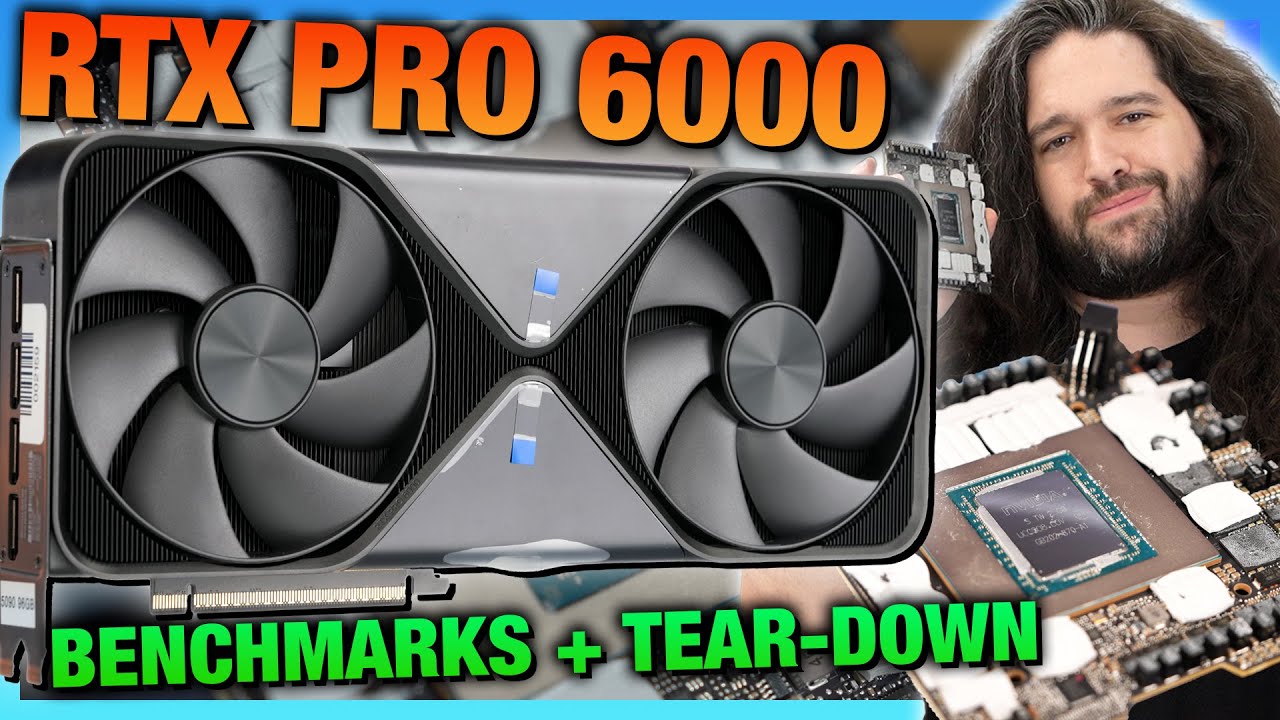The NVIDIA RTX Pro 6000 Blackwell is a high-end professional GPU with 96 GB of GDDR7 memory and 24,064 CUDA cores, excelling in AI and large language model workloads due to its massive VRAM, though it runs hotter and costs significantly more than consumer cards like the RTX 5090. While it offers modest gaming performance gains, its primary value lies in specialized professional applications, supported by a robust cooling design and strong benchmarking results, with ongoing software optimizations expected to enhance its capabilities further.
The video begins with the teardown and detailed examination of the NVIDIA RTX Pro 6000 Blackwell GPU, a high-end professional graphics card purchased for $8,000 to conduct independent testing and benchmarking. The presenter highlights the dense PCB design and notes the absence of liquid metal thermal interface material, likely replaced for reliability or liability reasons. The card boasts 96 GB of GDDR7 memory, significantly more than the consumer RTX 5090, and features a nearly full die with 24,064 CUDA cores, compared to the 21,760 cores on the 5090. The teardown reveals a sophisticated cooling solution with a 3D vapor chamber and a well-engineered FE-style cooler, though the memory cooling remains a concern due to high temperatures.
Thermal and acoustic testing shows that the RTX Pro 6000 runs about 10°C hotter on the GPU core than the RTX 5090, with similar memory temperatures around 88-90°C. Despite the higher temperatures, the fan noise levels are comparable, with only a slight increase in noise from the Pro 6000. The cooler design is praised for its efficiency and mechanical quality, maintaining good airflow and noise control for a two-slot form factor. The absence of liquid metal is linked to the temperature increase, but it may be a trade-off for long-term durability in professional environments.
Gaming benchmarks demonstrate that the RTX Pro 6000 outperforms the RTX 5090 by approximately 5-14% across various titles and resolutions, with the largest gains seen at higher resolutions like 4K. However, the presenter emphasizes that gaming is not the primary use case for this card, and the performance improvements come at a steep price premium—roughly $780 to $1,000 per 1% performance gain over the 5090. The tests also highlight the strong performance of the AMD Ryzen 9800 X3D CPU used in the test bench, which scales well with the GPU performance, reinforcing its value for benchmarking.
The video then explores experimental benchmarks focused on large language models (LLMs) and machine learning workloads, areas where the RTX Pro 6000’s large memory capacity shines. The card significantly outperforms the RTX 5090 and 4090 in token processing speeds across increasingly large models, with improvements reaching over 900% in the largest tested Llama 3 model. These results underscore the Pro 6000’s suitability for AI and professional workloads that require vast amounts of VRAM, a domain where consumer gaming cards fall short due to memory limitations.
In conclusion, the RTX Pro 6000 Blackwell is presented as a highly specialized workstation GPU designed for memory-intensive professional applications rather than gaming. The teardown and benchmarks reveal impressive engineering and performance, especially in AI workloads, but also highlight trade-offs like higher operating temperatures and a very high price point. The presenter expresses cautious optimism about the card’s capabilities while acknowledging ongoing software optimizations and the experimental nature of AI benchmarking. Future plans include potential overclocking experiments and further testing to explore the card’s full potential.
